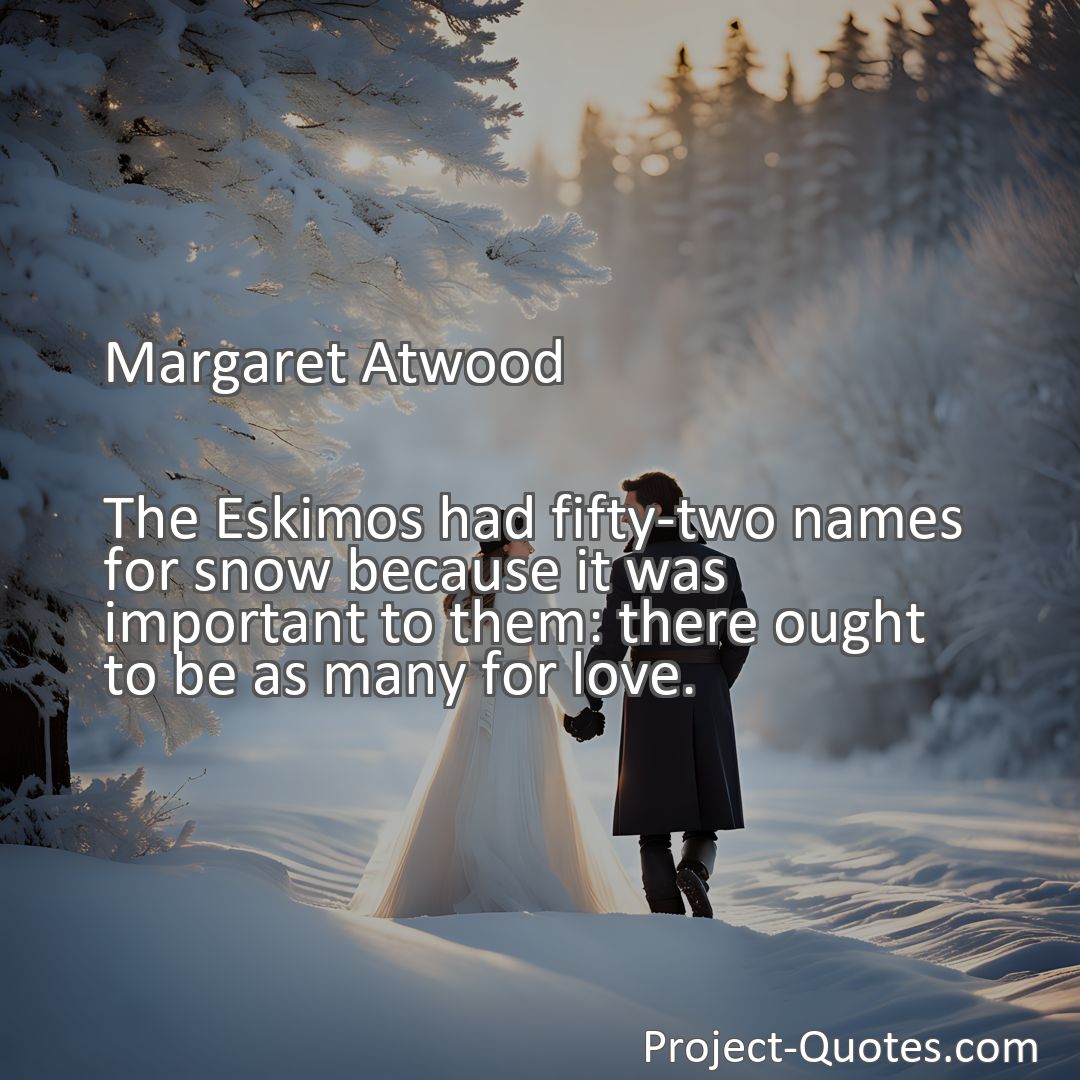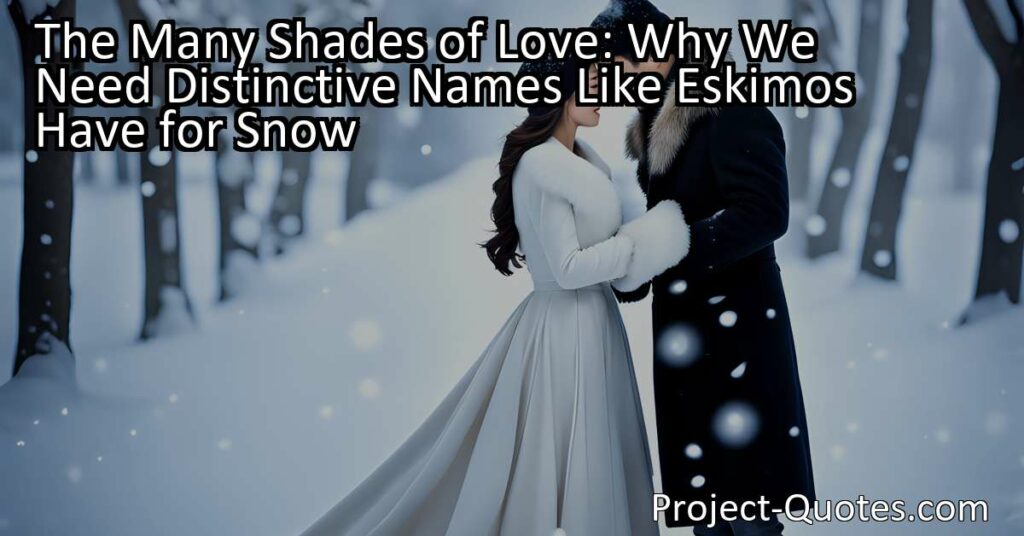The Eskimos had fifty-two names for snow because it was important to them: there ought to be as many for love.
Margaret Atwood
“The Many Shades of Love: Why We Need Distinctive Names Like Eskimos Have for Snow” explores the concept that love, like snow, has many different shades and textures. Just as Eskimos have multiple names for snow, there should be more names for love because it is complex and nuanced. Love, when in its sparkly new form, can make everything seem bright and shiny.
Table of Contents
Meaning of Quote – The Eskimos had fifty-two names for snow because it was important to them: there ought to be as many for love.
Canadian author Margaret Atwood once said something rather fascinating: “The Eskimos had fifty-two names for snow because it was important to them: there ought to be as many for love.” Unpacking this insight, Atwood is tapping into a beautiful conceptwhen something matters to us deeply, we often have many ways to describe and talk about it. And what could be more meaningful than love, which is as complex and nuanced as snow in a northern climate?
For the Eskimos (Inuit), the different kinds of snow are crucial to their way of life. Imagine waking up in a world blanketed by snow. To some of us, it might all look the samejust a cold, white landscape. But for those whose lives are intertwined with it, there are subtle differences. There might be powdery snow that puffs into the air with each step, or heavy wet snow that clumps together, perfect for molding into snowballs or building igloos. There’s the crusty snow that bears your weight for a moment before you sink through, or the treacherous layer of ice hidden beneath a dusting of flakes. Each type of snow has a specific name because each one has different implications for hunting, traveling, building, and even surviving.
Now, lets translate that idea to love. Love isn’t just a single feelingit’s an emotion with countless shades and textures, just like snow. There’s the love you feel for your family, warm and comforting like a thick blanket on a chilly night. This type of love is steadfast and steady, always there no matter the weather.
Then there’s the punch-drunk love of new relationships, sparking and fizzing like fresh snow under sunlight. It’s exciting, a bit overwhelming, and it makes everything seem bright and shiny. This love can feel exhilarating, like the first sled ride of winter, rushing and breathless.
Friendship is another kind of love, the playful, familiar companionship that’s akin to the perfect snow day. It’s when you band together to build snow forts or lace up your boots for an impromptu adventure. This love is about shared memories and the unspoken vow that you’ve got each other’s backs.
Love isn’t always easy, though; just like snow, it can create obstacles. There’s the deep, unnavigable drift that might symbolize a challenging period in a relationship, where every movement feels like a struggle and you both have to dig together to find your way back to clear paths.
And, sadly, theres the brittle ice over a pond that might represent the fragile state of a love that’s been cooled by distance or hurt. It may look solid, but one wrong step and you could be floundering in the icy waters beneath, struggling to piece it back together.
But it’s not all hardship; consider the love that’s like the blanket of snow on a quiet evening, creating a hush over the world. This might be the mature love that comes from years of being together, a peaceful, deep connection that doesn’t need words. It’s the shared glances that speak volumes and the comfort of knowing someone is there, like the diamond sparkle of snowflakes under a street lamp.
Just as there are different names for snow, there might as well be distinctive names for love. The furious blizzard of a quarrel, the slush of misunderstandings that need to be cleared away, the first delicate flurries of affection, or the snowball that grows larger as it rolls downhilleach the start of something that can become playful or powerful.
People sometimes say we can’t choose who we love, just like we don’t get to choose the weather. But we do decide how we handle the snow that falls, the same way we decide how to nurture the love we feel. Love can be shoveled into neat paths or sculpted into something beautiful like a snow sculpture that decorates a yard. It can be a source of joy and recreation or it can be back-breaking work when it piles up uninvited.
Learning about love is a bit like learning about snow. Each experience teaches us more about its many forms, from the soft flurries to the formidable storms. We carry these experiences with us, adding to our vocabulary of emotions, charting the landmarks of our own personal blizzards and perfect winter days.
Margaret Atwoods thoughtful observation asks us to consider: Why don’t we have fifty-two names for love? Perhaps it’s because we often take it for granted, expecting it to be unchanging and simple, when in reality, its anything but. Maybe it’s time we start creating new names, giving voice to the vast experiences love entails. After all, the more we talk about and understand the different types of love, the better equipped we are to navigate its landscapes.
So, next time you catch a snowflake on your glove or tell someone I love you, think about all the wondrous forms those four little letters can take. And maybe, just maybe, invent a new name for the kind of love you’re feeling right that moment. Because love, like snow, is a gift of nature that deserves to be celebrated in all its wonderful diversity.
I hope this quote inspired image brings you hope and peace. Share it with someone who needs it today!


